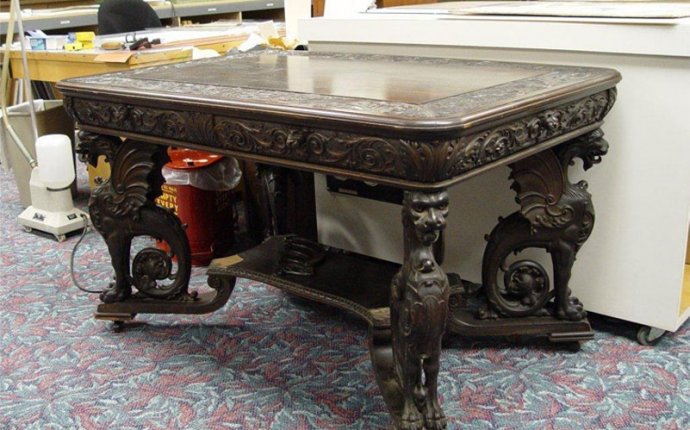
Antique Wood furniture Restoration
Over the years, wood furniture, cabinetry, and architectural woodwork (e.g., hand railings) can become encrusted with dirt and grime. This process is accelerated when we touch items and leave a little oil behind from our skin that combines with dirt and dust to produce a significant layer on the surface of the finish. Another source of the oily/dirty grime comes from cooking in the kitchen. There's a lot of oil splatter which gets spread around over time through contact.
The first consideration in the cleaning process is to remove the dirt and oily grime without harming the finish or wood. Stay away from areas that have gold or silver leaf applied (gilted), it is very easy to damage and should only be lightly dusted with a very soft brush. Before starting the cleaning process on a highly visible area, test your steps on a spot that's out of view just in case the finish has an undesirable reaction (e.g., softens or turns whitish).
To remove water-soluble grunge, start with a mild soapy solution using a little liquid dish soap and water. Don't use dish soap that's intended for the dishwasher or laundry soap because it can leave a film and it's pH is likely to be too alkaline. Use a soft cloth (e.g., cotton) and lightly rub the the surface to remove the grime. Use only enough soapy water to wet the surface without flooding it. Rotate the cloth frequently to avoid spreading the dirt it absorbs. Quickly dry the area with a soft clean cloth. Stay away from spots where the finish is chipped off or cracked to avoid wetting the wood and causing it to swell.
If the mild soapy solution doesn't work, you can use a stronger cleaning solution. In the past, trisodium phosphate (TSP) has often been recommended but phosphates have been outlawed in a number of states and it's bad for the environment everywhere. To replace it, manufacturers have developed phosphate-free TSP or Liquid TSP Substitute. Either is a good alternative to regular TSP. You can find these cleaners at your local hardware, home center, or paint stores. The same guidelines for using the mild dish soap solution apply to the stronger cleanser.
Sometimes old lacquer is damaged by oils and oily grime. The lacquer breaks down and becomes soft and sticky. If this happens, the finish itself is being removed along with the grime when you're cleaning the surface. There's no cure for this condition; the finish is ruined and has to be replaced on the affected areas. While cleaning sticky areas, pay close attention to the surface. If you see that color is being removed or that the finish is disappearing and you're down to bare or stained wood, go ahead and stop cleaning. At this point, it would be better to stop using a water-based cleanser and switch to a solvent based cleanser to avoid swelling the wood.
To remove oily grime and wax build-up you can use naphtha. You can find it in the paint section of your local home center or hardware store or at any paint store. It has a pretty strong odor and you should use it either outdoors or in the garage with the door open. It isn't a very dangerous solvent - not a high health risk - and it won't damage most finishes. But you should wear gloves and work in a very well ventilated area when you use it. It will remove wax finishes and create a whitish residue on some old finishes so testing it on a spot that's out of sight is wise. It is flammable, so be cautious of open flames and don't let the fumes concentrate in an enclosed space. Use naphtha to remove the oily grime and wax build-up the same way you would use the soapy solution. Regular mineral spirits or odorless mineral spirits (which do have an odor, just not as strong as regular mineral spirits) is a substitute for naphtha, but it isn't quite as strong and so it will take more time/effort to clean the grime.
I don't recommend using steel wool or synthetic steel wool (e.g., scotchbrite - the green, grey, or maroon scrubby pads) for cleaning. These remove some finish (a lot if you're not careful) and leave it dull. It's not necessary to abrade the surface to remove the dirt and grime.









